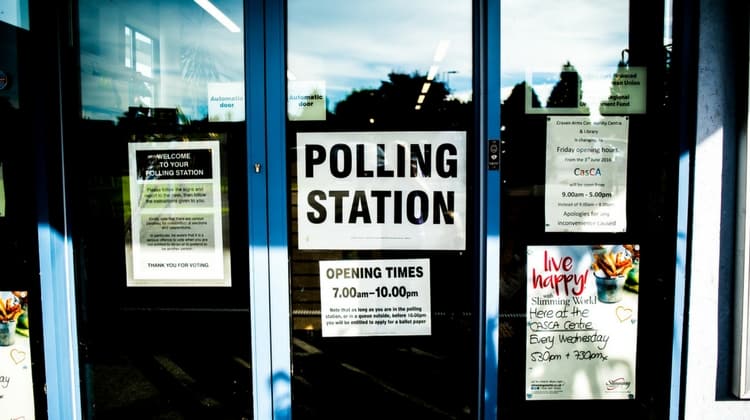Government
2016 Is Looking Like the New Normal

If you wanted to predict the results of Tuesday's gubernatorial elections in Virginia and New Jersey, you would have been wise to ignore the flurry of polls and campaign events. You would have paid no heed to the conventional wisdom that Republican Ed Gillespie had a solid chance to beat Ralph Northam in Virginia.
In fact, Northam's 9-point victory margin in Virginia was not much different from Phil Murphy's 13-point margin over Republican Kim Guadagno in New Jersey. And both almost precisely mirrored the 2016 presidential results. Hillary Clinton carried New Jersey by a 55-41 percent margin last year; Murphy won it by a 56-43 percent margin this week. Clinton carried Virginia by a 50-44 percent margin; Northam won it 54-45 percent. The two Democrats, lacking Clinton's reputation for dishonesty, gained a few points she lost to third-party candidates; the two Republicans got almost exactly the same percentages as Donald Trump did in 2016.
That makes the 2016 numbers look like the new normal. The past quarter-century, except for 2006-08, has been an era of polarized partisan parity, with one election result resembling another and more straight party ticket voting than any time since the 1950s. That's produced divided government, as Democrats have won 4 of 7 presidential elections since 1992 while Republicans have won a House majority in 10 of 12 congressional elections since 1994.
The parties are evenly matched but differently distributed. Democratic voters are clustered in central cities, sympathetic suburbs and university towns. Republican voters are spread more evenly elsewhere.
[wps_products_gallery product_id=”4333915537459, 4344660983859, 4334010171443″]
Trump changed that in 2016, but just a bit. Rough extrapolations from exit polls suggest he lost 2 million to 3 million college-educated whites who had previously voted Republican but gained some 3 million to 4 million non-college-educated whites who had previously voted Democratic or didn't vote. His college graduate losses cost him zero electoral votes; the non-college gains netted him 100 new electoral votes and the White House. The art of the deal.
New Jersey and Virginia have relatively few non-college-educated whites — 33 percent and 37 percent, respectively, according to FiveThirtyEight. They have many college graduates outraged by Trump. That's especially the case in northern Virginia. The Washington suburbs cast 35 percent of Virginia's votes.
Ed Gillespie, a former chairman of the Republican National Committee and backer of earlier comprehensive immigration reforms, ran for the Senate and won 43 percent of the vote in northern Virginia in 2014, losing statewide by just 1 percent. Trump got only 33 percent there in 2016, and this year, Gillespie could manage only 35 percent. Losing one-third of a state by 30 points instead of 11 is the difference between a squeaker and a near-landslide loss. Carrying the nonmetropolitan 30 percent of the state by a margin slightly better than Trump's doesn't compensate.
The danger for Republicans — and the opportunity for Democrats — is that Republicans next year will run, as Gillespie did, at Trumpish levels with high-education constituencies but fall, as he didn't, to pre-2016 levels in low-education areas. And despite Gillespie's improvement on 2014 in nonmetropolitan Virginia, Democrats made big gains in state House races by running well-organized and well-financed campaigns, mostly in high-education suburbs. Republicans went into Election Day with a 66-34 majority in the chamber; as this is written, Democrats might just gain the 17 seats needed to overturn that.
This has led David Wasserman, The Cook Political Report's ace U.S. House race analyst, to say Democrats are “slight favorites” to overturn the Republicans' 240-194 majority in the House. My impression is that anti-Trump enthusiasm has been inspiring many serious Democrats to run in high-education districts but not many are running in low-education districts.
Democrats could suffer from internecine primary strife and plurality nominations of fringe candidates, but clearly, Republicans are worried. Many Republican incumbents are retiring, some because of six-year term limits on chairmanships, others for fear of serving in the minority, where your job is to show up and lose.
Similar fears may be prompting House Republicans to rally around their leadership's tax legislation, to avoid the type of fiasco we saw when the House floundered and the Senate failed to repeal Obamacare. But any serious legislation is tricky, and the president's party needs informed guidance from the White House. So far, that's most lacking.
Off in South Korea, Trump ungallantly tweeted, “Ed Gillespie … did not embrace me or what I stand for.” Is splitting a party with majorities at risk part of the art of the deal?
Michael Barone is a senior political analyst for the Washington Examiner, resident fellow at the American Enterprise Institute and longtime co-author of The Almanac of American Politics.
COPYRIGHT 2017 CREATORS.COM












